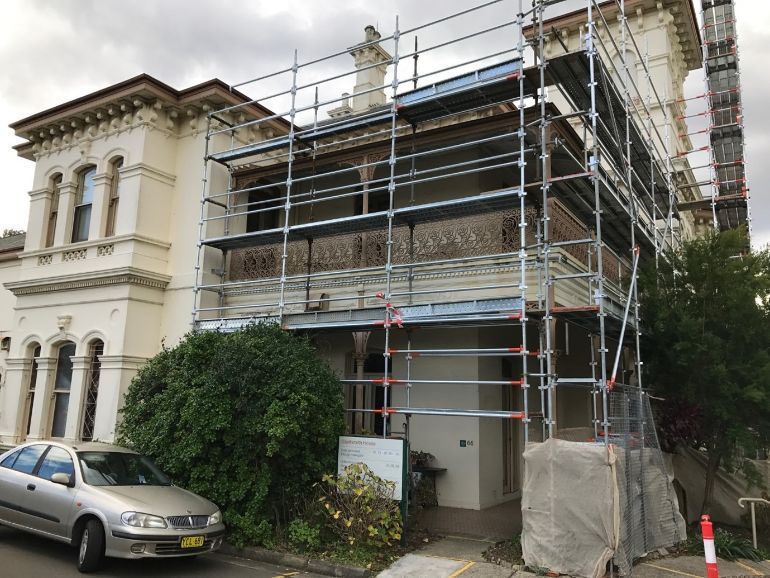Lead-Based Paint Removal on Glentworth House
This project for Taylor Constructions in Ashfield, NSW was in relation to the historically significant Glentworth House, a structure built in 1840. The team ran into a roadblock when it came to the removal of lead-based paint from the fretwork’s façade.
The major challenge was with the potential removal of the fretwork, as it posed several risks. There was the obvious issue of damaging irreplaceable castings, not to mention sourcing a safe method of paint removal that would ensure the fine works remained uncompromised.
Taylor Constructions considered using chemical lead paint stripper, but the method wasn’t right for this application. Taking into account time constraints, odour, capturing of contaminated materials, and general inefficiency, this idea was swiftly taken off the table. Traditional abrasive blasting was also floated as an option, but it was far from ideal. A combination of excessive secondary waste, breakage risks due to heat transfer, higher pressure used, and accessibility issues meant that this method was also not right for the situation.
Finally, the team landed on the Cryonomic solution, taking advantage of accredited lead-abatement-management trained staff. The numerous benefits of this system made it the obvious choice. Dry ice blasting performed by expert operators meant that there was a lower blast pressure, making for a much gentler process. Other advantages included far lower secondary waste (as little as 5-10 kg of abrasive media per hour), no heat transfer, no flash rusting, and no access issues. Thanks to the efficient, compact, and gentle Cryoprep system, Taylor Constructions got outstanding results.

Experience the Difference – Try Revolutionary Cryonomic Cleaning Technology Today
Contact information
80 Regentville Rd, Sydney NSW 2750, Australia
